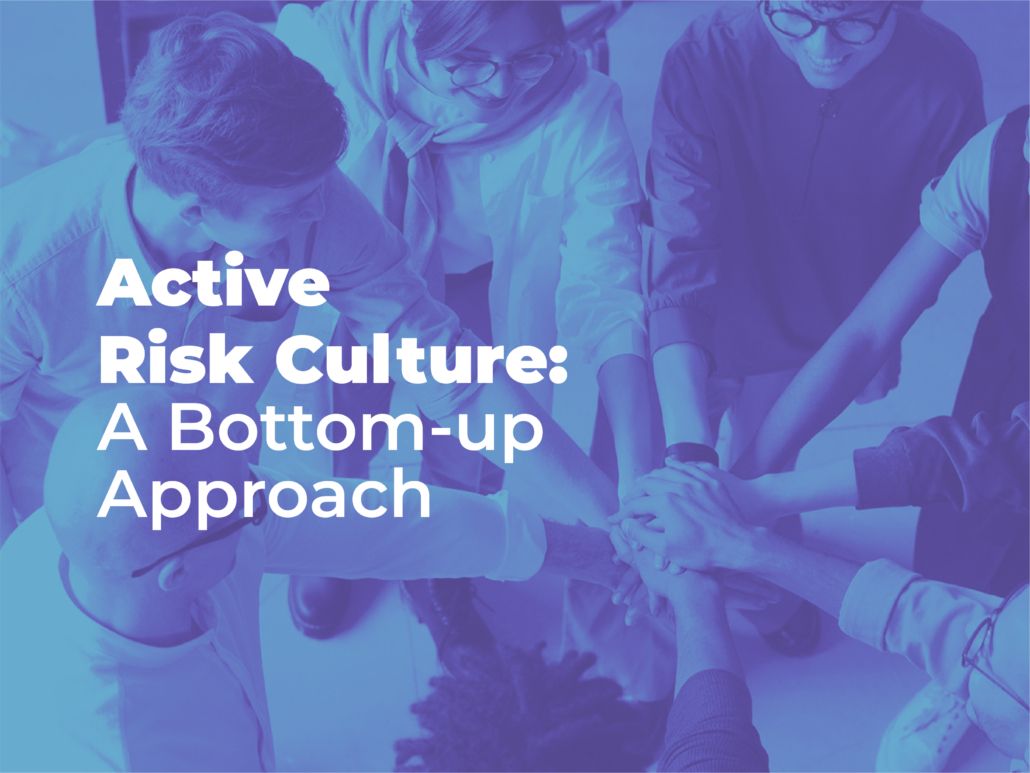Risk management programs

Sound risk culture is an attitude or an amalgamation of behaviors that build organizational immunity and achieves specific business goals. The key to building a “good risk culture” is first to understand and articulate the cultural outcomes that will drive the right performance and support an organization’s strategy delivery.
In a three lines defense model, most organizational risk management programs seek a company-wide understanding of the “three lines of defense.” In the first line, business operations own and manage risk; in the second line, risk control and compliance oversee risk; and in the third, independent assurance conducts audits and reviews.
Traditional models assume the top-down approach where the board and senior management take the responsibility to set the tone and demonstrate behavioral mores in a risk culture transformation exercise. In risk management, transformations work in three phases: laying the foundation, measuring the impact, and embedding the change.
However, it is often noticed that measuring cultural change and ensuring its lasting impact against multiple KRIs may prove difficult. One of the main reasons for this is that a risk culture change cannot be achieved by a simple “one size fits all approach”. Seeing risk culture as simply a governance check — focussing on inputs, checklists, and frameworks, and trying to implement one way of working or thinking will drain company resources, risking company performance and opportunities.
There is unlikely to be a single right way for one person to behave, so what matters is that groups of people constructively challenge each other and check that the overall behavior is what is desired.
Towards a bottom-up approach to measure risk and influence culture
The answer to developing a robust risk culture thus lies in assessing the implementation of controls through the visible evidence of culture — conduct. Conduct is the little tip of the iceberg that floats while the vast complexity of culture remains submerged. And what better place to study and gather insights about conduct than right at the bottom — the first communication touchpoints?
Disseminating best practices in risk-based behavior across the organization demands accurate measurement of existing and potential risk factors to manage, predict, and mitigate risks before they escalate. In this regard, customer interaction from the front office — call center executives, sales agents, online agents, and chatbots, etc. can be turned into an insights hub to detect conduct risks early and use them to influence culture transformation.
As a monitoring platform, Cognitive View sees great value in using AI-driven technology to enable robust conduct risk surveillance frameworks and compliance architecture for a sound risk culture for your organization.
With a bottom-up approach, you can achieve:
– Accuracy in Measurement: Turn your traditional QA front office function into an insights hub that provides agent level, business level, and customer level insights
– Improve Organizational culture: Accurately design auditing and training procedures to begin the change from bottom-up while participating in top-down management-led behavior protocols
– Mitigate Misconduct: Understand drivers of misconduct, and act to restore trust, avoid penalties, and remediation costs. Ensure individuals and leaders are held accountable for deceptive conduct
– Resolve Conflict of interest: Understand conflict of interest at different touchpoints
– Fulfill Service Obligation: Understand regulatory obligations and avoid fines and reputational damage
Are you ready to streamline your operational processes towards the ideal risk and performance culture?
